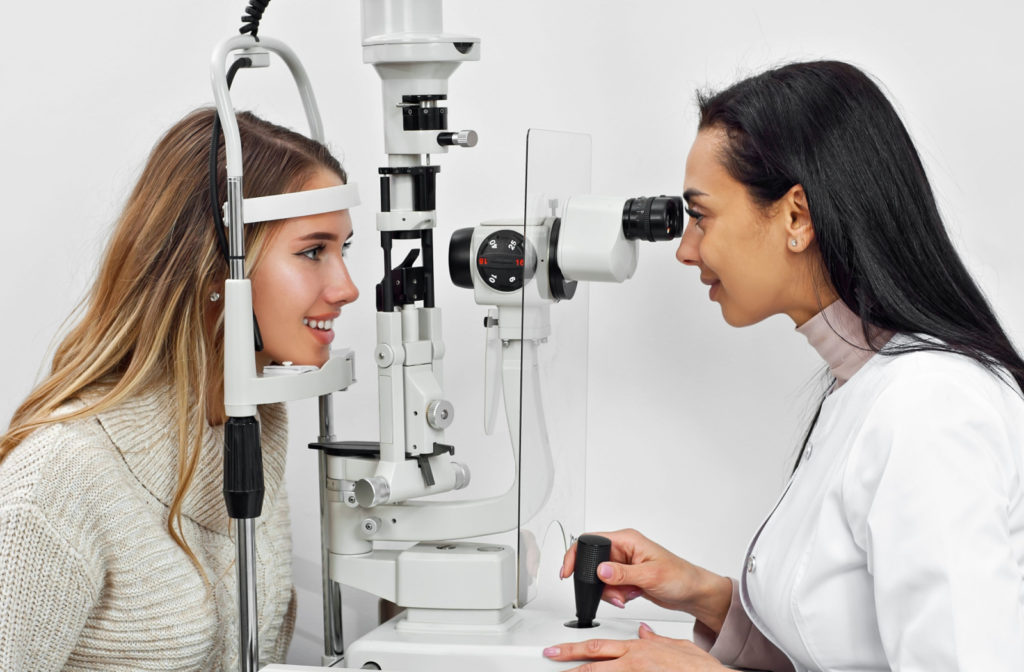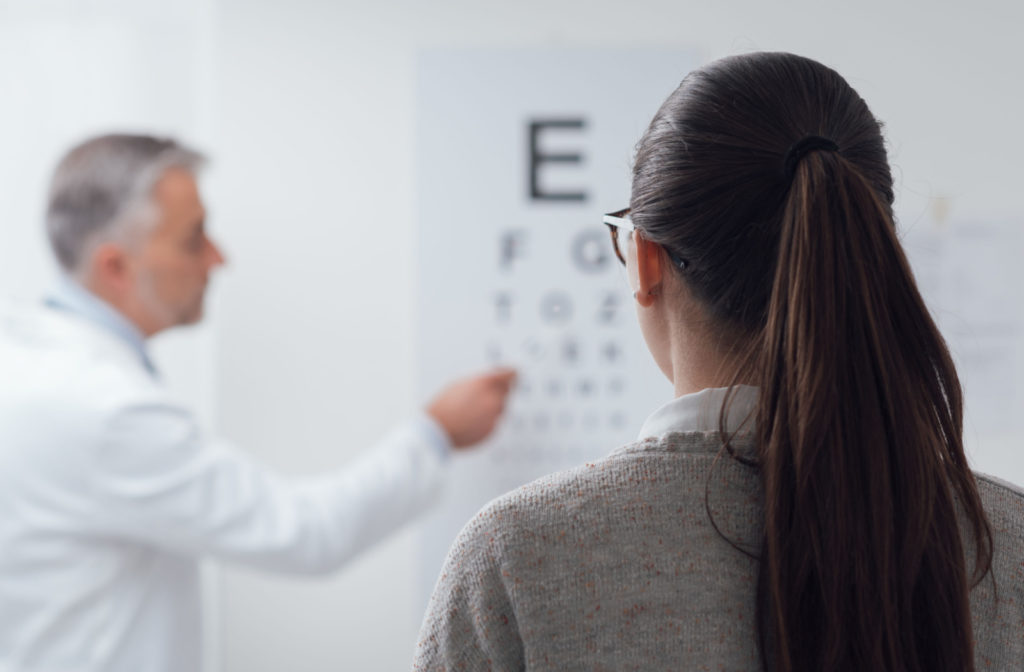Normal vision, often called 20/20 vision, is the ability to see clearly at 20 feet what should typically be visible at that distance. This term is a universal standard for visual acuity, representing the clarity or sharpness of your vision.
During a comprehensive eye exam, an eye doctor uses this measure as a crucial tool to assess the patient’s overall eye health and function.
Understanding Normal Vision Range
The term “normal vision range” refers to the standard extent of vision a healthy human eye should possess, encompassing central and peripheral vision.
When someone has 20/20 vision, they see clearly at 20 feet what should be visible at that distance. However, it’s important to note that 20/20 vision doesn’t imply perfect eyesight but indicates the sharpness and clarity of vision at a distance.
Central Visual Acuity
Central visual acuity is a term that describes the ability of your eyes to see fine details in your surroundings. Central visual acuity is tested using printed or projected images like letters or shapes.
If you have excellent visual acuity, it indicates to the eye doctor that various parts of your visual system are working well.
Peripheral Visual Acuity
Your visual field represents the broad scope your eye can capture while concentrating on a singular point. It’s akin to the panoramic view you achieve when you gaze straight ahead. To determine the range of vision in each eye and to track any loss of sight that may have transpired over a period, your ophthalmologist employs a technique known as visual field testing.
Measuring Vision Range
An eye doctor measures the range of vision using various tests. The most common test for central vision is the Snellen chart, which has letters of different sizes.
For peripheral vision, a visual field test is used. This test measures the width of the area that your eyes can see when you’re focusing on a central point.
Vision Loss Over Time
It’s important to note that normal vision range can change over time due to factors like aging, eye diseases, or injuries. Regular eye exams can help detect changes early and prevent further vision loss.
Regular check-ups with an eye-care professional are recommended for personalized advice.
Difference Between 20/20 & 20/40 Vision
Having 20/40 vision means you need to be twice as close as someone with normal vision to see things with the same clarity.
The main difference between 20/20 and 20/40 vision is the distance from which you can see an object clearly. Having 20/20 vision indicates that an individual can perceive the same level of detail from a distance of 20 feet as the average person. On the other hand, a visual acuity of 20/40 implies that one can discern the same amount of detail from 20 feet as an average person would from a distance of 40 feet.
Common Causes of Vision Impairment
The primary causes of reduced vision are predominantly age-related eye conditions. These include age-related macular degeneration, cataracts, diabetic retinopathy, and glaucoma.
These conditions underscore the importance of regular eye check-ups, particularly as you get older. Early detection and treatment can often prevent these diseases from significantly affecting your vision.
- Age-related macular degeneration is an eye disease commonly linked to aging. It leads to sharp and central vision impairment, which is crucial for clear object perception and essential daily activities like reading and driving.
- A cataract is a clouding of the eye’s lens that happens so gradually that you may not notice it until you have trouble with your vision. Cataracts often develop slowly and can affect one or both eyes. The primary symptoms are blurry vision, faded colors, glare, and difficulty with night vision.
- Diabetic retinopathy is a condition that may develop in individuals with diabetes. It arises from damage to the blood vessels in the retina, the light-sensitive tissue at the back of the eye. Initially, diabetic retinopathy may be asymptomatic or cause only minor vision impairments. However, if left untreated, it can eventually lead to blindness.
- Glaucoma is a collection of eye conditions that impair the optic nerve, an essential component of clear vision. Typically, this damage occurs due to elevated pressure within the eye, which, if left untreated, can result in blindness. Often hereditary, glaucoma may remain undetectable until later stages of life.
Tips for Preserving Normal Vision Health
Maintaining the health of your eyes requires care, awareness, and positive lifestyle choices. Some tips to help preserve your vision include:
- Understanding your family’s eye health background. Being aware of any diagnosed eye diseases or conditions in your family is crucial, as many are inherited.
- Maintaining a nutritious diet for healthy eyes. A diet rich in various fruits and vegetables, especially dark leafy greens like spinach, kale, and collard greens, is important for maintaining eye health. Consuming fish high in omega-3 fatty acids can also contribute to good eye health.
- Maintaining a healthy weight. Being overweight or obese raises your risk of developing systemic conditions like diabetes, which can lead to vision loss through glaucoma or diabetic eye disease.
- Using protective eyewear. When participating in sports or performing activities at home that may pose a risk to your eyes, it’s important to wear protective eyewear.
- Wearing sunglasses. Sunglasses help to protect your eyes from harmful ultraviolet rays.
Resting your eyes. Remember to rest your eyes periodically to avoid eye strain, especially if you spend long periods on the computer or focusing on one thing.

Prioritize Your Vision at Dr. Henslick Vision Center
At Dr. Henslick Vision Center, we’re committed to helping with your eyes’ overall health. Our team of experienced and compassionate eye doctors is ready to assist you with inquiries about eye diseases, routine eye exams, or stylish options for eyewear.
Don’t wait until you notice a problem—book a comprehensive eye exam today.




